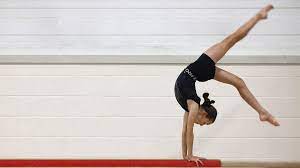Starting Strong: What Every Parent Should Know Before Their Child Begins Gymnastics
Gymnastics for kids is more than just cartwheels and balance beams—it’s a powerful combination of fitness, focus, and fun that supports physical and emotional development. If your child is about to attend their first gymnastics class, you might be wondering how best to prepare them (and yourself). The good news? With a little planning and encouragement, their first session can be a confident leap into a new skillset and social experience.
This article will guide you through practical, parent-approved tips to help your child thrive in their introduction to gymnastics.
Why is gymnastics good for kids?
Gymnastics gives kids an all-in-one foundation for fitness, confidence, and discipline. Some of the most important benefits include:
- Improved balance, coordination, and strength
- Social skills through group participation
- Early development of focus and discipline
- Confidence-building through incremental progress
A 2022 report from Sport Australia highlights that regular participation in structured sport from early years improves long-term physical activity habits and mental wellbeing. Gymnastics sets this tone early.
How can you prepare your child emotionally for gymnastics?
Starting something new can stir up excitement and nervousness at the same time—especially for younger children. Here’s how to set them up emotionally:
- Talk positively about the experience. Use language that emphasises fun and exploration rather than pressure.
- Watch a class together (either live or online) so they know what to expect.
- Meet the coach beforehand if possible—familiar faces ease anxiety.
- Remind them it’s okay to make mistakes—learning is part of the fun.
Building comfort in advance makes it easier for children to step into a new environment with confidence.
What should they wear and bring?
Keeping things simple is best. For most beginners:
- Wear snug, stretchy clothing like a leotard, bike shorts, or leggings and a fitted top—nothing too baggy.
- Avoid jewellery or accessories that could catch on equipment.
- Hair should be tied back neatly.
- Bring a water bottle and label it with their name.
- No shoes needed—gymnastics is usually barefoot for better grip and control.
Check if the centre has specific dress codes. Some venues offer optional uniforms once a child settles in.
Should parents stay during the class?
This depends on the venue’s policy and your child’s comfort level. Many gymnastics centres encourage “drop and go” after a few classes to foster independence, but the early sessions might allow observation from a designated viewing area.
Consistency builds confidence. If your child feels wobbly in the first session, showing up at the same time, smiling, and keeping farewells upbeat can build trust over time.
How do you talk to your child after their first class?
What you say after the class matters just as much as what you say before. Focus on how they felt, not just what they did. Instead of asking, “Did you do a cartwheel?” try:
- “What part did you like the most?”
- “Was the coach nice?”
- “Do you want to show me what you learnt?”
This lets your child lead the conversation and process the experience in their own way—while you reinforce effort and enthusiasm.
What if your child is shy or hesitant to join in?
It’s completely normal for kids to feel nervous or shy at the beginning. If they cling to you or cry a little, it doesn’t mean they’re not ready. In fact, many children who initially hesitate go on to love gymnastics after a few sessions.
Here are some tips that work:
- Stay calm and reassuring without fuss.
- Ask the coach for support—they’re used to helping kids adjust.
- Stick to a consistent schedule—confidence grows with routine.
- Celebrate small wins—even just participating is a big deal.
By building on small moments of progress, your child develops a positive connection with the sport.
How do you support skill development at home?
You don’t need a home gym to encourage development. A soft mat, a bit of open space, and encouragement are often enough.
Try simple, fun activities like:
- Practising balance on a line (chalk or tape)
- Doing animal walks (bear crawl, crab walk)
- Stretching together before bed
These build strength, flexibility, and confidence in a low-pressure setting—and show your child you’re interested in their growth.
What signs show your child is ready for gymnastics?
Not every child is ready at the same age. Some signs they may be ready include:
- They enjoy climbing, rolling, or jumping
- They follow instructions fairly well
- They show interest in movement or tumbling
- They’re curious about group activities
If they tick a few of these boxes, gymnastics for kids is a great outlet to harness their energy and curiosity.
FAQs
How early can children start gymnastics?
Children can begin gymnastics as early as 18 months in parent-assisted classes. Independent classes typically begin around ages 3–4, focusing on basic movement and confidence-building.
How often should kids do gymnastics?
Once or twice a week is ideal for beginners. It gives kids enough time to develop skills without becoming overwhelmed or fatigued.
Is gymnastics safe for kids?
Yes—when coached properly and supervised in safe facilities, gymnastics is a safe sport. Injury rates are low compared to contact sports, especially in beginner programs focused on safety and fundamentals.
Final Thoughts
Your child’s first gymnastics class is a memorable step toward physical confidence, social growth, and joyful movement. With a little preparation and positivity, you’ll help them not only show up—but thrive.
And if you’re curious about structured class options or what different programs might look like as your child progresses, check out this helpful gymnastics class guide that breaks down levels and schedules clearly.
For more on the role sport plays in child development, this Sport Australia resource offers up-to-date insights and national data on participation trends.

